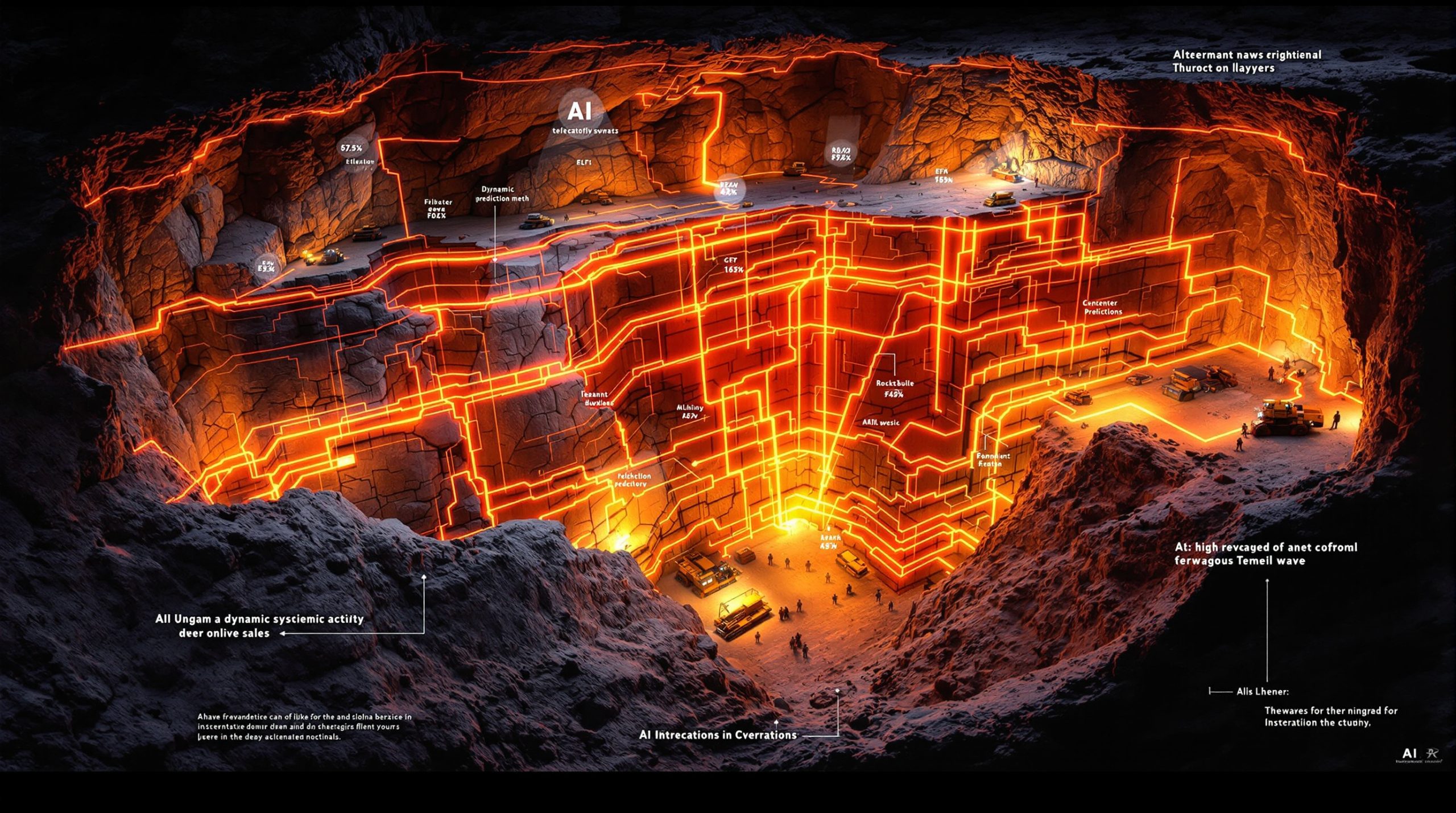The Evolution of Precious Metals M&A: Signals of a Major Consolidation Cycle
In the constantly evolving landscape of precious metals, investors are closely watching mergers and acquisitions in precious metals as a key indicator of industry transformation. With market fundamentals shifting and gold prices surging—supported by recent gold prices analysis—significant consolidation appears imminent.
What’s Driving the Current Wave of M&A in Precious Metals?
Bull Market Fundamentals Creating Acquisition Opportunities
The precious metals sector is experiencing a remarkable resurgence. Over the past year, gold prices have increased dramatically, energising market sentiment and prompting investors to re-evaluate strategy. Furthermore, many market participants are convinced that these trends will spur further consolidation.
*”It’s a bull market, and in bull markets, interesting things happen,”* explains John Rabino, founder and editor of rabbino.substack.com. His insight underscores how rising valuations can prompt larger companies to pursue smaller targets.
Cash Flow Dynamics Fueling Acquisition Potential
Improved metal prices have significantly enhanced the cash flow of established mining operations. Consequently, companies with record capital reserves are now in a position to consider strategic acquisitions.
Moreover, many major miners are actively engaging in accelerating gold M&A to create further growth. This shift in dynamics often means that smaller firms, particularly those considered undervalued gold stocks, play an increasingly attractive role in the market.
Historical patterns suggest that when gold surges, the rich cash flows and competitive pressures force a wave of acquisitions by well-established players, all while reinforcing market stability.
How Are Royalty Companies Leading the M&A Charge?
Recent Landmark Royalty Transactions
The royalty segment has seen a flurry of significant transactions recently. For example, Franco-Nevada completed a landmark $1 billion royalty stream acquisition. Such deals highlight the strong commitment of royalty companies to capitalise on favourable market conditions.
Similarly, Royal Gold’s $500 million royalty deal demonstrates that robust financial flows can drive large-scale investments. As a result, these transactions are widely regarded as important signals for broader industry consolidation.
*”A billion dollars royalty deal is huge,”* emphasises Rabino, illustrating just how impactful these developments can be.
The Royalty Business Model Advantage
Royalty companies operate with a unique business model where they finance mining operations in exchange for a percentage of future revenue. This offers numerous benefits, including risk mitigation and improved capital efficiency.
This model has allowed them to generate substantial cash flows and consistently outperform traditional miners. In addition, their ability to spread investment across multiple projects creates a natural hedge against market volatility.
Such strengths place royalty companies at the forefront of the ongoing consolidation cycle.
What Signals Are These Transactions Sending to Investors?
Early Indicators of Broader M&A Activity
Recent royalty transactions carry deep implications for the wider sector. The notable investments and aggressive bidding strategies indicate that industry leaders are preparing for accelerated consolidation.
Rabino observes, *”the M&A pickup is what lights a fire under those stocks in most precious metals bull markets.”* As a result, major producers are carefully watching these developments to gauge appropriate acquisition targets.
This creates a cascading effect, where smaller companies become attractive for strategic acquisition.
Investment Implications for Different Market Segments
The current consolidation wave creates various opportunities for investors. Junior explorers, development-stage companies, and mid-tier producers each face unique acquisition prospects.
- Junior Explorers: Potential for acquisition premiums if their promising assets are realised.
- Development-Stage Companies: Near-term production opportunities attract strategic buyers.
- Mid-Tier Producers: Established operations serve as excellent targets for consolidation.
- Royalty Companies: Their robust models fuel continued growth and acquisition activity.
This sector dynamic is intertwined with mergers and acquisitions in precious metals, helping shape future investment profiles.
Why Is Physical Gold Demand Surging Simultaneously?
COMEX Physical Delivery Trends
The physical gold market is undergoing significant shifts. Notably, there is a growing trend among market participants to opt for actual delivery of gold, a departure from the norm.
Analysts note that instead of merely rolling positions forward, more parties are taking delivery. For instance, increased withdrawals of physical gold from exchange inventories are reshaping market behaviour.
This trend complements other market dynamics and further boosts investor confidence.
Diversification of Wealth During Market Uncertainty
The surge in gold demand is not limited to futures contracts. A wide range of investors—from central banks to high-net-worth individuals—are increasingly seeking tangible assets.
Many banks and institutions follow central bank gold trends for insight into this preference. In addition, these trends underscore why direct ownership is becoming more attractive.
This diversification is a strategic response to broader market uncertainties and inflation concerns.
How Does the Monetary Policy Environment Impact Precious Metals M&A?
Interest Rate Trajectory and Mining Economics
The current monetary environment, characterised by elevated interest rates following tight policy cycles, has substantially influenced mining economics. Lower future rates are expected to boost project valuations further.
This environment brings down discount rates, while reduced financing costs improve acquisition feasibility. Consequently, companies acting now might benefit greatly if rates eventually decline.
This trend further drives mergers and acquisitions in precious metals within a context of favourable project economics.
Moreover, market participants are keeping an eye on gold volatility effects as indications of future financial conditions.
The Path to Potential Zero or Negative Rates
While central banks remain cautious, many market analysts expect an eventual shift towards ultra-low or even negative interest rates. Historical trends suggest that such environments are optimal for precious metals.
This could lead to:
- Increased Acquisition Premiums – as companies bid more aggressively.
- Accelerated Resource Consolidation – to secure key assets before prices rise further.
- Improved Financing Conditions – making large-scale deals more feasible.
Given this outlook, forward-thinking mining companies may seize acquisition opportunities before market conditions shift dramatically.
What Are the Global Macroeconomic Factors Driving Industry Consolidation?
Sovereign Debt Concerns Accelerating Precious Metals Interest
Worrying sovereign debt levels in developed economies have pushed investors towards safe-haven assets, such as precious metals. These concerns have elevated the strategic importance of asset consolidation.
Rabino warns, *”We borrowed way too much money. There’s no fix for what’s coming.”* Debt dynamics, therefore, play a pivotal role in shaping acquisition strategies.
Such fiscal pressures are prompting companies to seek tangible assets as a hedge against economic instability.
This environment is increasingly prompting mergers and acquisitions in precious metals, ensuring that resource consolidation remains a top priority.
Inflation Protection Driving Strategic Acquisitions
Persistent inflation concerns continue to steer strategic planning across the mining sector. Rather than relying solely on paper assets, companies are directing capital toward physical resource acquisition.
This approach is supported by:
- Resource Consolidation – as a direct hedge against currency devaluation.
- Production Expansion – to maximise returns on higher nominal prices.
- Vertical Integration – to mitigate supply chain cost pressures.
Consequently, robust inflation expectations help drive acquisition premiums and reinforce industry consolidation.
How Might a Potential Currency Reset Impact the Mining Sector?
Historical Precedents for Monetary System Changes
Talks of a potential currency reset have gained traction among analysts. Historical instances, such as Germany’s post-World War I transition to a gold standard, highlight how monetary disruption can lead to swift realignments.
Such examples suggest that a future currency reset could dramatically enhance the strategic value of mining assets. Companies with substantial reserves may find themselves in a prime position should a new monetary order emerge.
Industry commentators often reference these shifts when considering long-term strategies.
For further context, consider the recent discussion found in an industry mergers insight piece that explores these dynamics.
Positioning Mining Companies for Monetary Transition
Forward-thinking mining executives are increasingly incorporating potential monetary resets into their strategic planning. Emphasis is being placed on:
- Reserve Expansion – aggressively growing proven resource bases.
- Jurisdictional Diversification – reducing concentration risk.
- Balance Sheet Strengthening – improving liquidity and lowering debt.
- Strategic Partnerships – forming alliances to better weather disruptions.
By proactively addressing these issues, companies can better position themselves for adverse shifts in monetary policy.
Investors and executives alike understand that a currency reset could amplify the advantages inherent in mergers and acquisitions in precious metals.
What Should Investors Watch for in Precious Metals M&A?
Key Indicators of Accelerating Consolidation
For investors looking to capitalise on emerging trends, several indicators warrant close scrutiny. Monitoring acquisition premiums, transaction volumes, and shifts in geographic focus can provide early signals of increased consolidation.
Furthermore, active discussion of M&A during management calls and industry conferences supports the notion that a consolidation cycle is underway.
Investors should monitor mergers and acquisitions in precious metals closely to adjust their positions appropriately.
Potential Investment Opportunities and Strategic Considerations
As the M&A cycle gathers momentum, various opportunities emerge across the sector. Forward-thinking investors can benefit from:
- Junior and Micro-Cap Gains – acquiring positions in companies with growth potential.
- Development-Stage Projects – targeting firms on the cusp of production growth.
- Mid-Tier Consolidation – capitalising on undervalued assets for long-term growth.
- Robust Royalty Models – benefiting from proven revenue streams.
Indeed, understanding these nuances is critical in a market where strategic play can result in substantial long-term benefits.
This sector dynamic further reinforces the importance of mergers and acquisitions in precious metals for shaping future market landscapes.
Conclusion
The current market conditions mark a pivotal moment for the precious metals sector. With dynamic shifts in cash flows, physical gold demand and monetary policy, the industry is set for accelerated consolidation.
Investors must remain agile, armed with insights on gold market strategies and informed by ongoing analysis. Ultimately, by closely tracking key indicators, those poised to benefit from this major cycle can secure a competitive edge.
As market forces converge, it is imperative to recognise that mergers and acquisitions in precious metals play a central role in defining the future of this dynamic industry.
## Want to Capitalise on the Next Major Mineral Discovery?
Discovery Alert's proprietary Discovery IQ model provides instant notifications on significant ASX mineral discoveries, empowering investors to identify actionable opportunities in the precious metals sector before the wider market. Visit our discoveries page to understand how major mineral finds have historically generated substantial returns.




